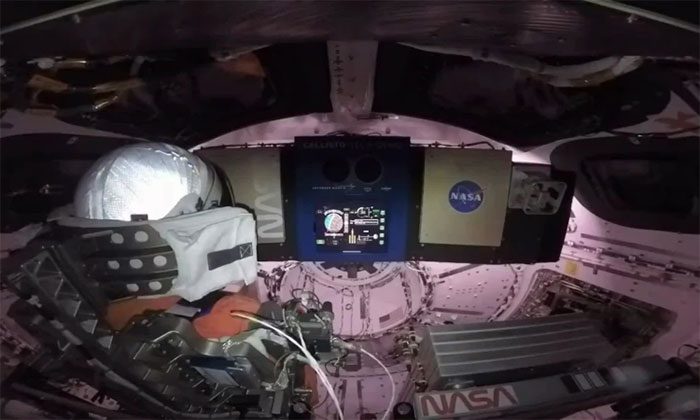Astronauts will fly around the Moon aboard NASA’s Orion spacecraft during the Artemis II mission, scheduled for launch in 2024.

View from the Orion spacecraft cabin at launch.
Inside NASA’s Orion spacecraft, a pink light beam illuminated the area as the Launch Abort System (LAS) separated from the spacecraft shortly after liftoff on the Space Launch System (SLS) rocket. Lockheed Martin, the manufacturer of the Orion spacecraft, shared footage on social media platform Twitter on December 3. The images in the video reveal what astronauts will experience aboard Orion during NASA’s crewed Artemis II mission. They will witness the separation of the LAS if the launch proceeds smoothly.
The video was recorded during the successful launch of the Orion spacecraft and the SLS rocket on November 16. Currently, the Artemis I test mission is en route back to Earth from the Moon. The Artemis I mission helps verify NASA’s most powerful rocket, the SLS, and the Orion spacecraft designed to carry humans on upcoming missions. A mannequin seated in the pilot’s seat of the Orion spacecraft is also collecting data to determine the effects of space travel, including radiation exposure. Orion is set to land in the Pacific Ocean on December 11, concluding the mission.
Video: Lockheed Martin
Artemis II is expected to launch in 2024. This mission will carry astronauts on a trajectory similar to Artemis I, flying around the Moon and returning to Earth. The Artemis III mission, launching in 2025, will return humans to the surface of the Moon for the first time since the Apollo 17 mission in 1972. During this mission, astronauts will use the Orion spacecraft to connect with SpaceX’s upgraded Starship rocket, which will serve as the lunar lander.
NASA’s Launch Abort System generates over 18,000 kg of thrust, enough to lift 26 elephants off the ground, according to NASA. The system is designed to quickly evacuate astronauts from the SLS in case of an emergency. However, since the launch proceeded as planned, the LAS was jettisoned into space to reduce the mass of the Orion spacecraft in orbit.


















































